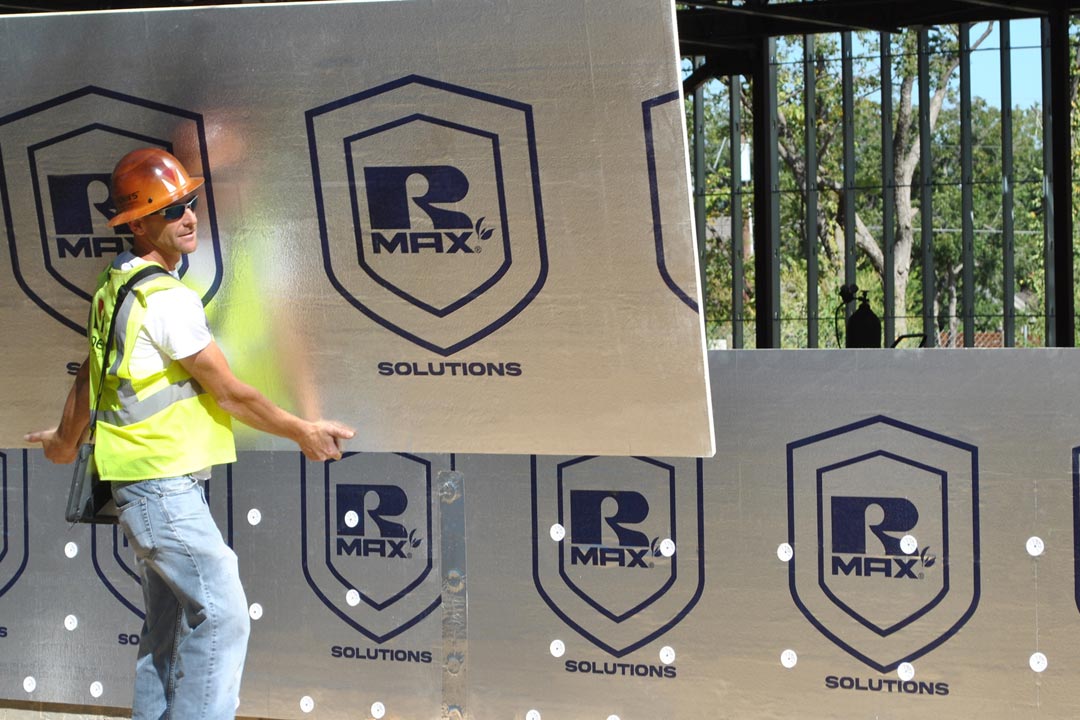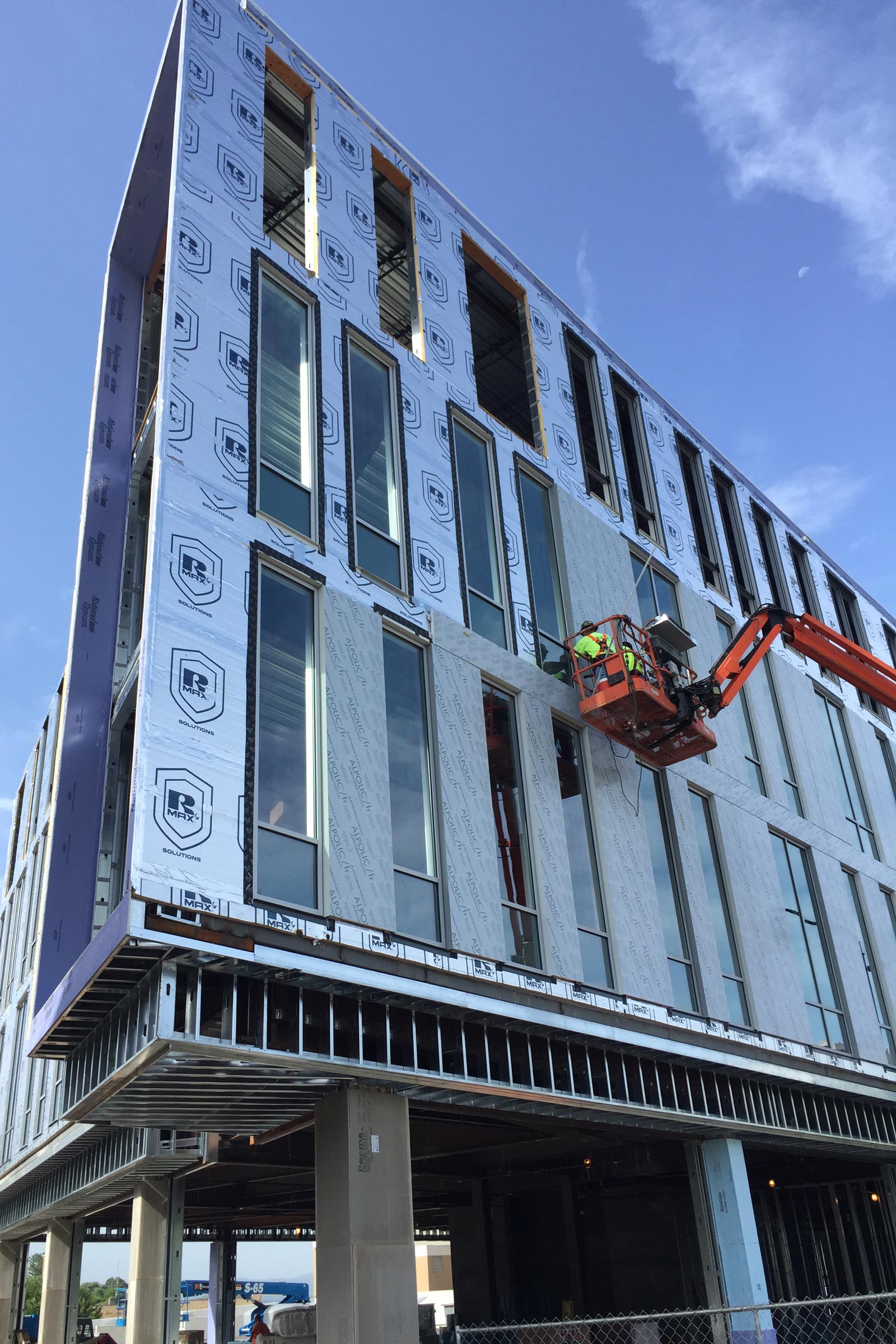
Foil-faced polyiso can act as a building’s air and water resistive barrier while meeting NFPA 285 fire codes, enabling the elimination of exterior gypsum and other air barriers. Photo courtesy of Rmax
For more than 40 years Rmax has set itself apart as a market leader in polyisocyanurate insulation. Due to its high R-value per square inch and fire resistant properties, polyiso has proven itself a sustainable and cost effective solution as continuous insulation in commercial and residential walls and roofing systems.
With an R-value of 6.5 per inch, polyiso’s thermal properties surpass other rigid foam plastics by 20 to 70%, making it a clear choice for continuous insulation—a must for any sustainable project, given that HVAC costs often make up the vast majority of a building’s energy bill. But did you know foil-faced polyiso can also act as the building’s air and water resistive barrier while meeting NFPA 285 fire codes, enabling the elimination of exterior gypsum and other air barriers, significantly reducing material and labor costs?
Air and water barriers play an important role in protecting a building from the elements. For instance, if not properly protected, water and moisture could pass through a building’s exterior, contributing to rot and mold that erodes performance and sustainability over time. Additionally, in colder climates, warm air inside a heated building can condense into vapor if it passes through a building’s envelope and settles on a colder surface, which can only be prevented by effective continuous insulation.

Polyiso is fast becoming a preferred material for sustainable building and design, considering it simplifies the construction process and has other economic and environmental benefits. Photo courtesy of Rmax
Many environmentally conscious architects are now designing with polyiso continuous insulation and removing redundant materials like exterior gypsum and spray-applied membranes to reduce environmental impact and improve sustainability. With each added component comes greater costs and a larger environmental footprint. For example, 40,000 square feet of wall space on a commercial building might include approximately 100,000 pounds of unnecessary gypsum board, which is typically covered with petroleum-based chemicals.
Ultimately the environmental impact of producing just the membrane material is the equivalent of manufacturing a million plastic shopping bags or 15 million plastic straws. By employing foil-faced polyiso instead, builders can save money while saving the environment, and maintain top-tier performance to boot. Not only that, but by simplifying the construction process, builders can ensure projects go up faster. With economic, environmental, and practical benefits, it’s no wonder polyiso is fast becoming a preferred material for sustainable building and design.

Photo courtesy of Rmax
Greg Fantin, vice president – marketing, has been with Rmax for eight years, and has served as the chairman of the board of directors for the Polyisocyanurate Insulation Manufacturers Association since January 2019.
Learn more about Rmax’s sustainability and read more insulation stories here.

